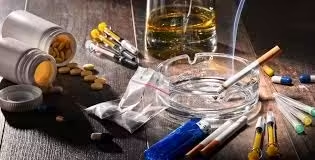The use of drugs has been a part of human culture for centuries, but their impact on society has evolved dramatically over time. From medicinal uses to recreational abuse, drugs have influenced various aspects of life, including health, economy, crime, and social dynamics. This blog delves into the multifaceted effects of drug use on society, highlighting both the negative consequences and potential paths toward rehabilitation and prevention.
Understanding Drug Abuse
Definition of Drug Abuse
Drug abuse refers to the harmful or hazardous use of psychoactive substances, including alcohol and illicit drugs. It often leads to addiction, which is characterized by compulsive drug-seeking behavior and use, despite harmful consequences.
Types of Drugs
- Illegal Drugs: Substances like heroin, cocaine, and methamphetamine.
- Prescription Drugs: Medications that can be misused, such as opioids and benzodiazepines.
- Alcohol: A legal substance that can lead to abuse and addiction.
- Nicotine: Found in tobacco products, it is highly addictive and harmful.
The Social Impact of Drug Abuse
1. Health Consequences
Drug abuse has significant health implications for individuals and communities.
Physical Health
- Addiction: Prolonged use can lead to physical dependence and addiction.
- Chronic Diseases: Users are at risk for diseases such as liver cirrhosis, lung cancer, and cardiovascular issues.
Mental Health
- Mental Disorders: Drug use is often linked to anxiety, depression, and other mental health disorders.
- Cognitive Impairment: Long-term use can lead to memory loss and cognitive decline.
2. Economic Impact
The economic burden of drug abuse is staggering and affects society in various ways.
Healthcare Costs
- Increased Spending: Governments spend billions on healthcare services for drug-related illnesses.
- Emergency Services: The need for emergency medical services due to overdose cases strains healthcare systems.
Productivity Loss
- Workplace Issues: Drug abuse leads to absenteeism, decreased productivity, and workplace accidents.
- Unemployment: Many individuals lose their jobs due to addiction, leading to increased welfare dependency.
3. Crime and Drug Abuse
The relationship between drug abuse and crime is complex and multifaceted.
Drug-Related Crimes
- Trafficking: The illegal drug trade fuels organized crime and violence.
- Theft and Robbery: Individuals may resort to crime to fund their addiction.
Incarceration Rates
- Prison Population: A significant percentage of inmates are incarcerated for drug-related offenses.
- Recidivism: Many released individuals relapse and return to crime, perpetuating the cycle.
The Impact on Families and Communities
1. Family Dynamics
Drug abuse can tear families apart and create a cycle of dysfunction.
Strain on Relationships
- Conflict: Addiction often leads to conflict and breakdowns in communication.
- Neglect: Children of drug-addicted parents may face neglect and emotional trauma.
Generational Effects
- Intergenerational Trauma: The effects of drug abuse can carry over to future generations, affecting children’s mental health and stability.
2. Community Impact
Communities are often adversely affected by drug abuse.
Social Disintegration
- Loss of Trust: Drug abuse can erode trust within communities, leading to isolation and fear.
- Decreased Quality of Life: High crime rates and drug-related issues can diminish the overall quality of life.
Stigmatization
- Social Stigma: Individuals struggling with addiction often face stigma, which can hinder recovery efforts and community support.
Prevention and Rehabilitation
1. Education and Awareness
Raising awareness about the dangers of drug abuse is crucial for prevention.
School Programs
- Drug Education: Implementing drug education programs in schools can help children make informed choices.
- Peer Support: Encouraging peer-led discussions can create a supportive environment.
2. Treatment Options
Effective treatment options are essential for those struggling with addiction.
Rehabilitation Programs
- Inpatient and Outpatient Care: Various rehabilitation programs cater to different needs, offering medical and psychological support.
- Support Groups: Organizations like Alcoholics Anonymous (AA) provide community support for individuals in recovery.
3. Policy and Legislation
Government policies play a vital role in addressing drug abuse.
Harm Reduction Strategies
- Safe Injection Sites: Providing safe spaces for drug use can reduce overdose deaths.
- Needle Exchange Programs: These programs aim to reduce the spread of infectious


